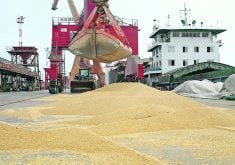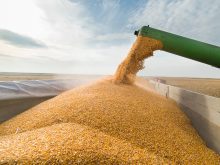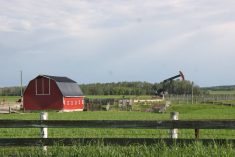The potential for higher durum prices is in the air as disease and drought cut deeply into this year’s crop.
Fusarium head blight is taking a big bite out of durum again this year in the wetter areas of the Prairies.
Fusarium is widespread in Manitoba and word out of North Dakota is even more worrying.
Kent McKay, agronomist at the Central Research Extension Centre in Minot, N.D., says the disease is so bad in north central and northwestern parts of the state than many fields might not be harvested.
Read Also

Bunge’s crop mix is changing
Bunge has predominantly been a soybean processing firm, but that’s about to change after the merger with Viterra with softseed processing and grain merchandising gaining ground.
The weather in July at flowering consisted of showers every other day and humidity near 90 percent – ideal for disease development.
Several durum varieties grown in the region have poor resistance and were hard hit.
This is important because North Dakota is the leading durum producer in the United States, accounting for about 70 percent of the crop last year.
In its Aug. 1 production report, the United States Department of Agriculture put North Dakota durum production this year at 60.8 million bushels, a drop of 22 percent because of fewer seeded acres and a one bushel per acre drop in yield, to 27 bu. per acre.
In now appears that estimate might have been optimistic.
The next production estimates in Canada will also probably have to scale back durum numbers.
In its July 30 report, Agriculture Canada forecasted prairie durum yields at 25 bu. per acre. But Saskatchewan Agriculture’s more recent forecast is for average durum yields in the province to be 21.8 bu. per acre.
Given that the bulk of the durum crop is grown in Saskatchewan, yields would have to be terrific elsewhere for the average to be 25 bu. That seems unlikely.
On the demand side, word out of Italy is that its crop has also been hurt by bad weather. Italy will likely have to import more durum than last year.
All this indicates that the Canadian Wheat Board’s Pool Return Outlooks in the future should show better durum prices.
Unfortunately, many farmers won’t have the grain to take advantage of them.














